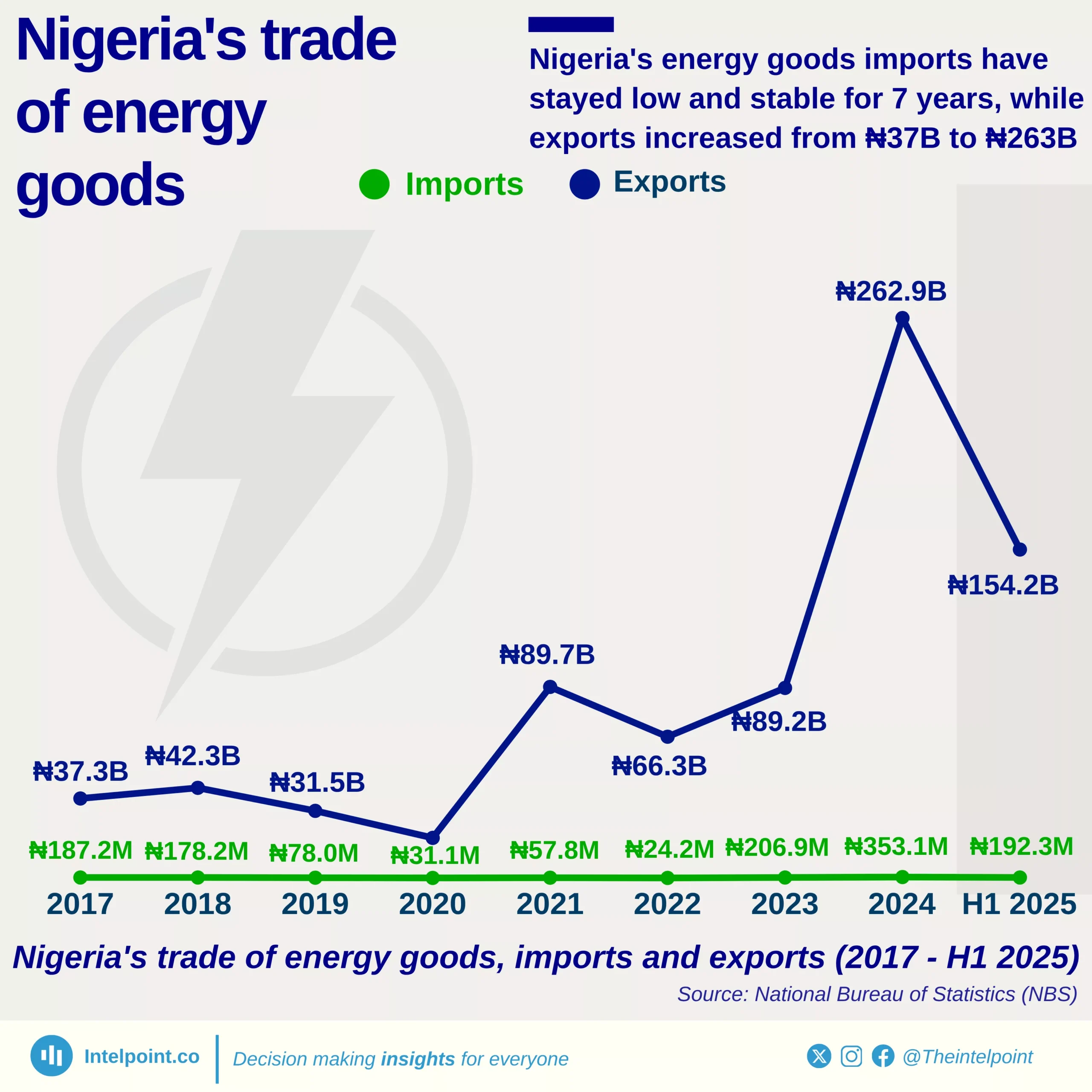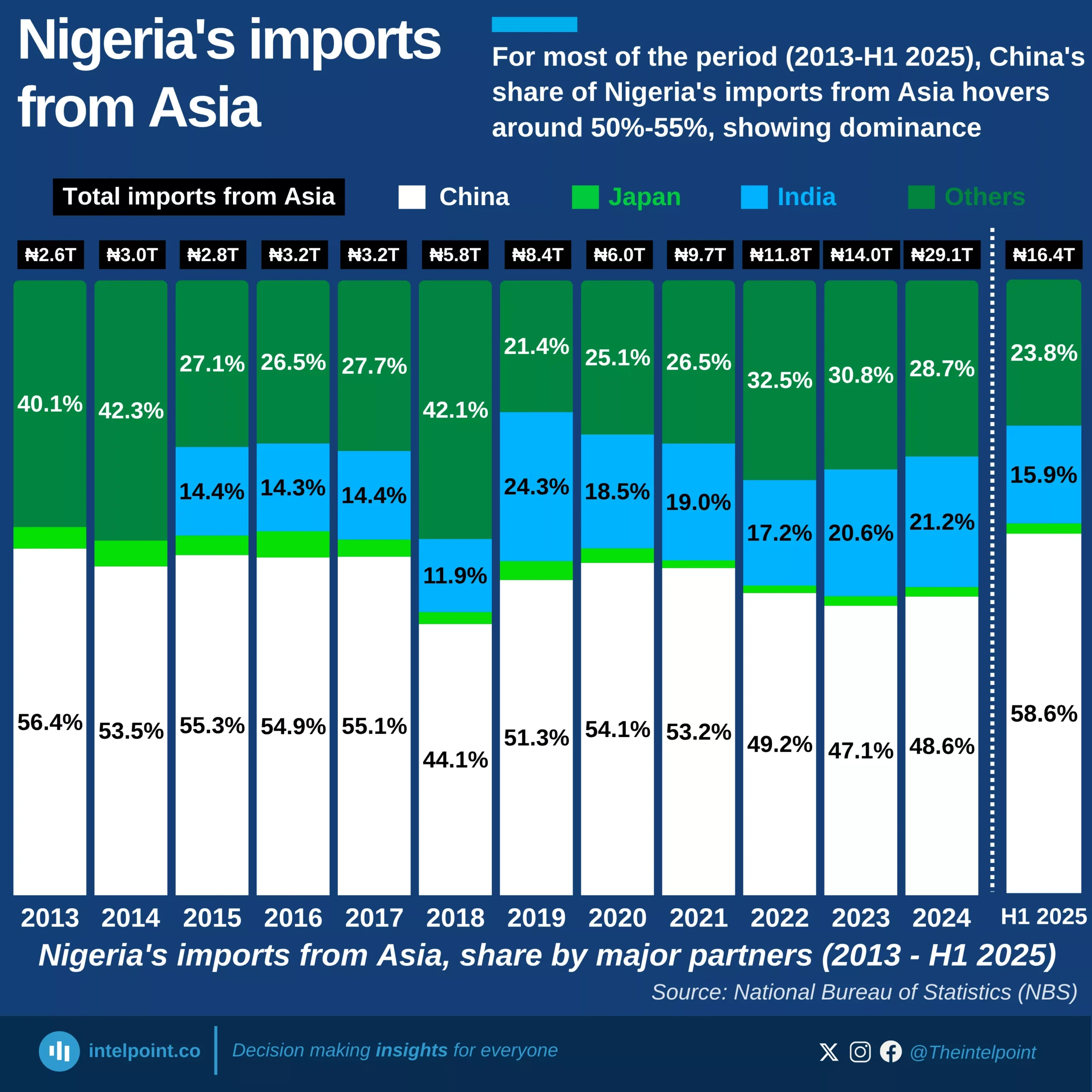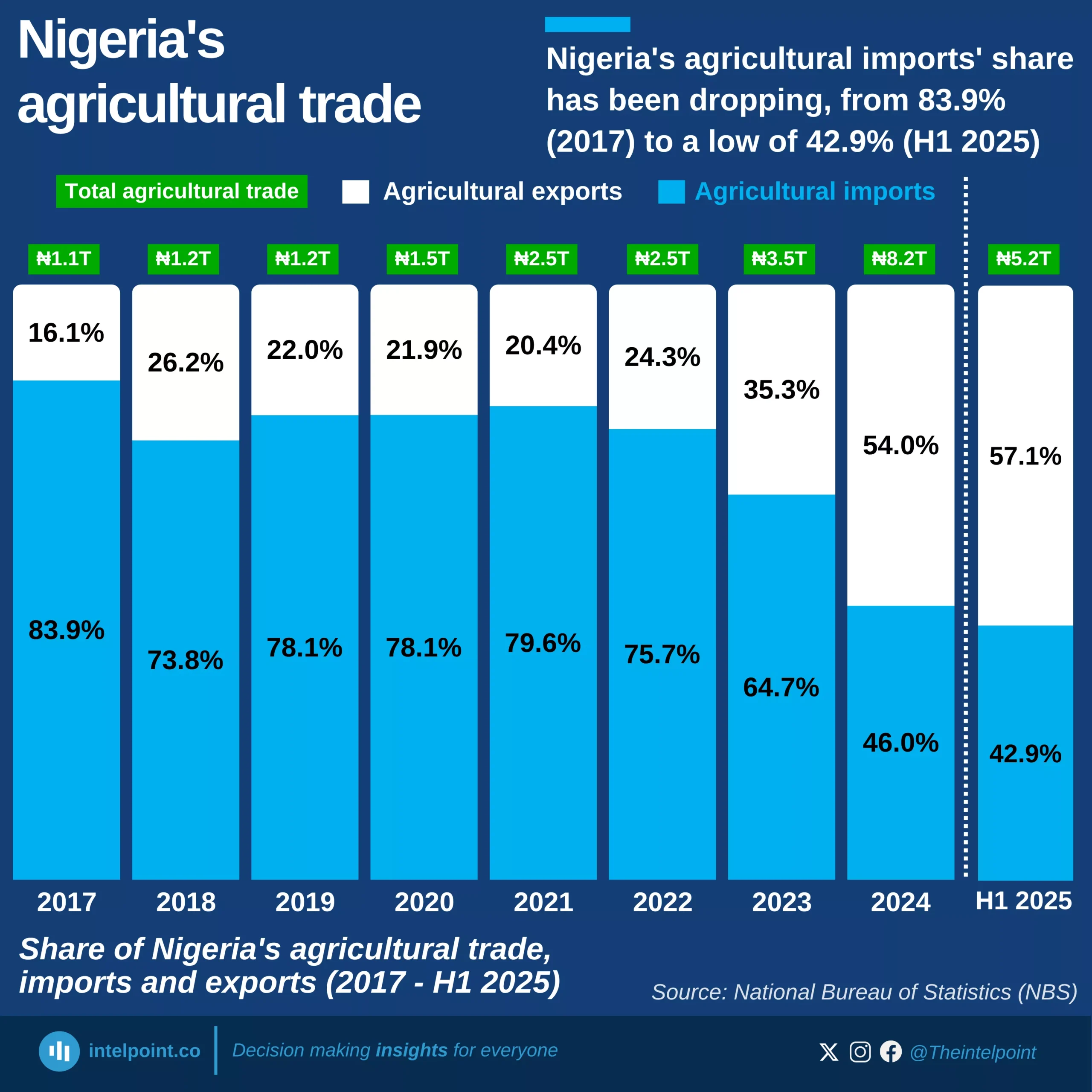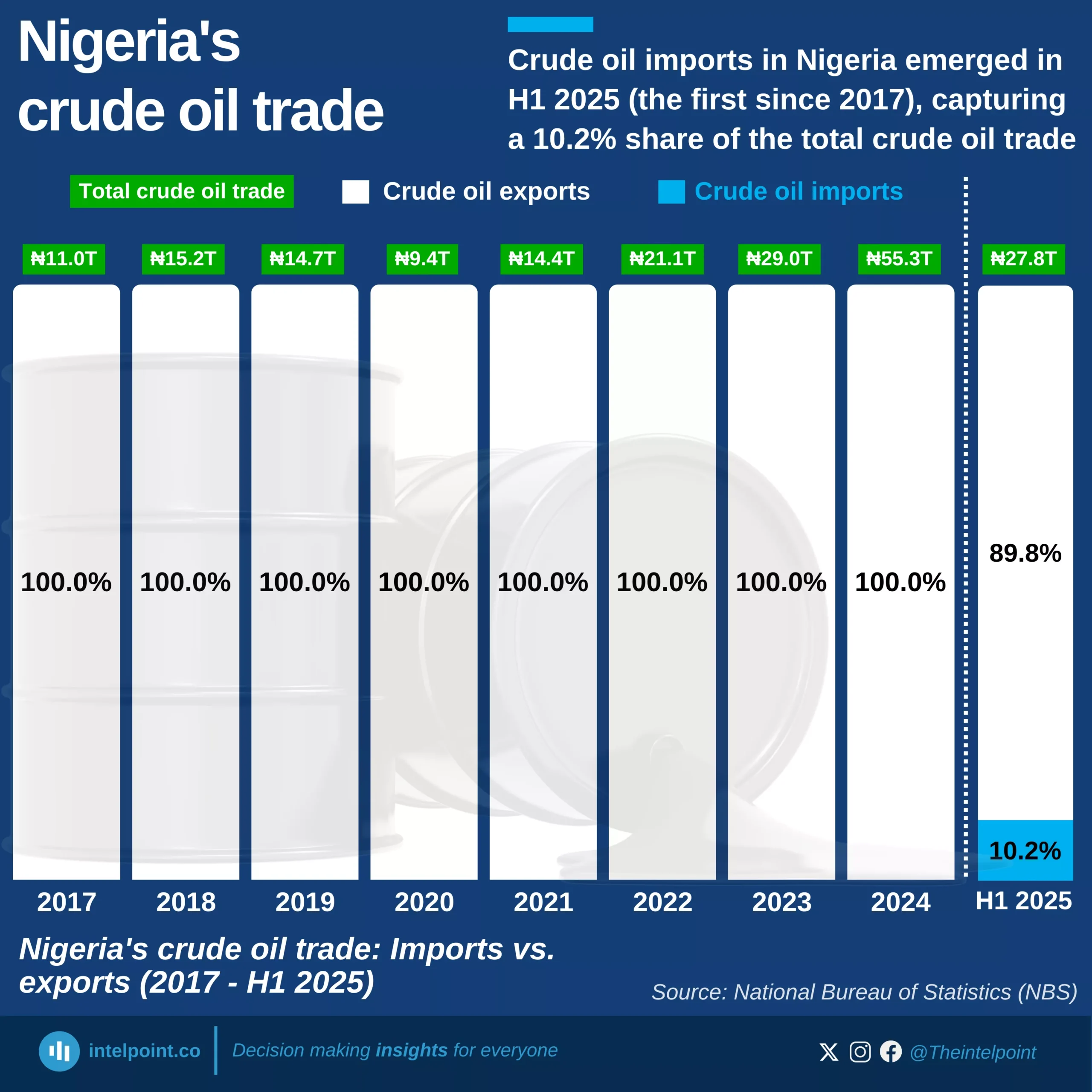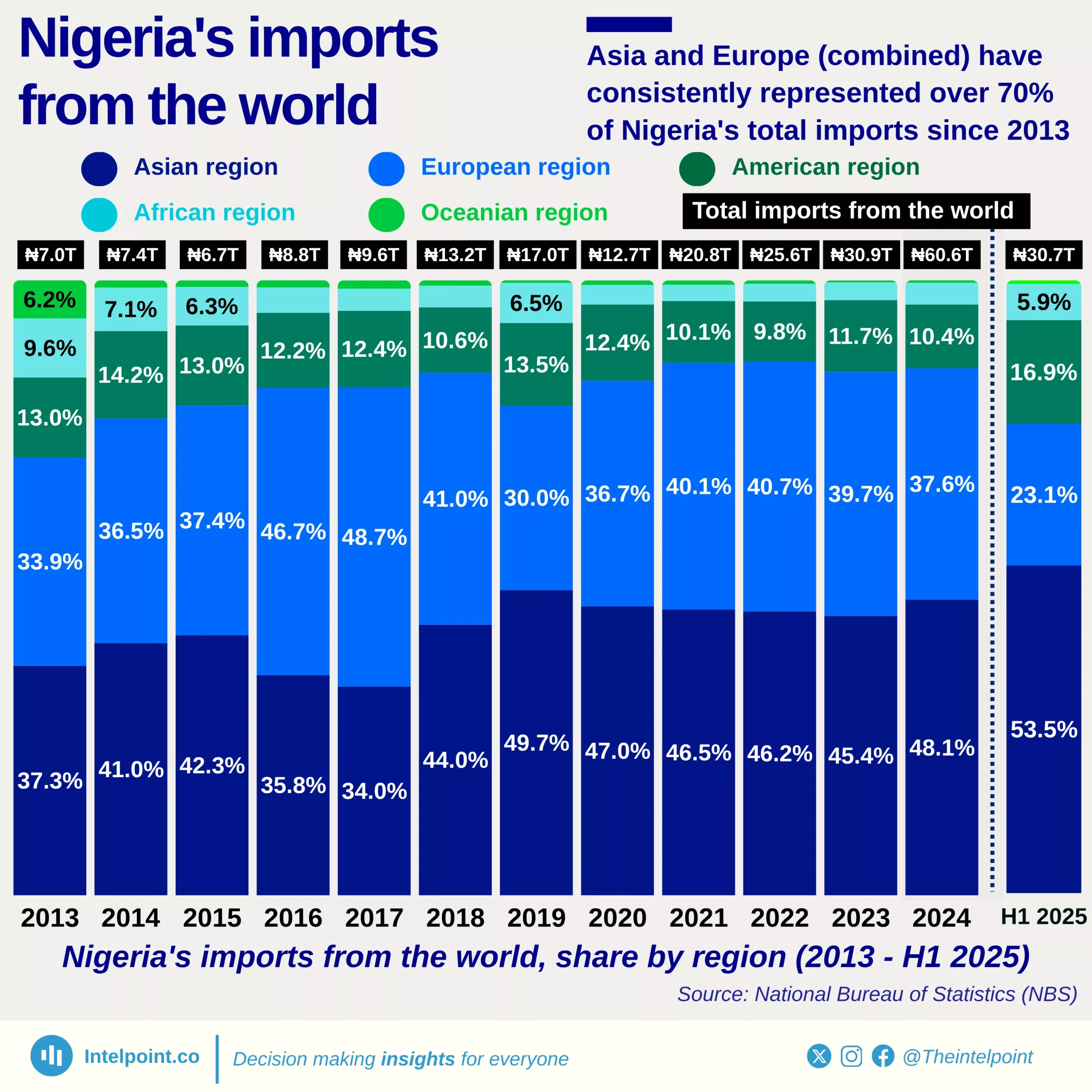Key Takeaways:
Between 2017 and 2024, US–Nigeria trade relations underwent notable changes shaped by global economic shifts, most prominently the COVID-19 pandemic. In 2017, the US' imports from Nigeria stood at a peak of $7.3 billion but plummeted to just $1.55 billion by 2020 due to pandemic-related disruptions.
The US' imports from Nigeria have steadily increased, reaching $5.87 billion by 2024. Simultaneously, its exports to Nigeria have demonstrated exceptional resilience and growth, expanding from $2.17 billion in 2017 to $4.17 billion in 2024.
Overall, total goods trade between the two nations ranged from $4 billion during the pandemic's peak to nearly $10 billion by 2024. The trade balance has shifted dramatically in the United States' favour during this period. The trade balance that began as a substantial $5.14 billion deficit for the US in 2017 narrowed to just $1.7 billion by 2024, with the US even achieving trade surpluses in 2020 and 2021.
